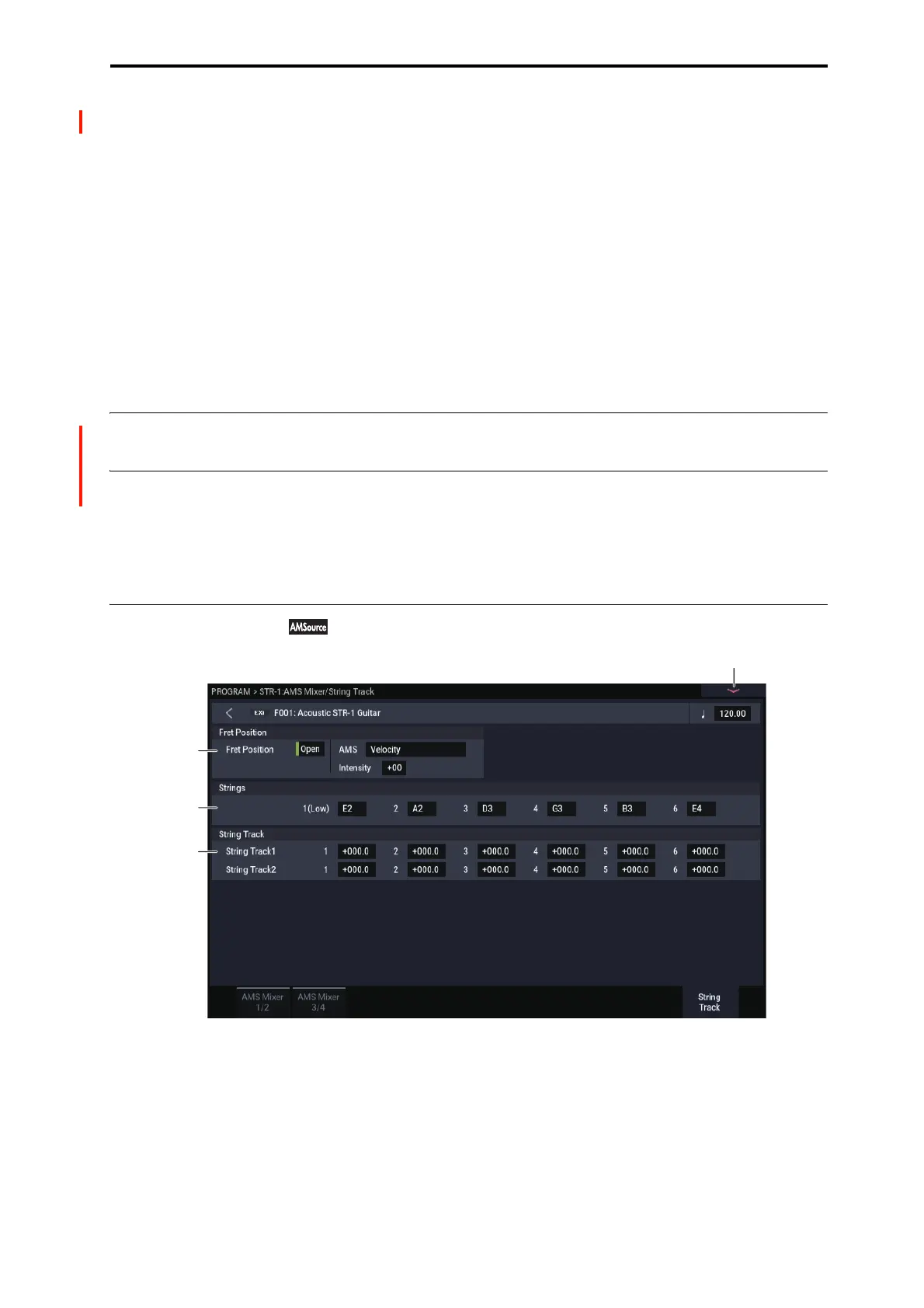PROGRAM > STR-1: AMS Mixers/String Track 9–1: AMS Mixers 1/2
249
PROGRAM > STR-1: AMS Mixers/String Track
AMS Mixers
The AMS Mixers combine two AMS sources into one, or
process an AMS source to make it into something new.
For instance, they can add two AMS sources together, or use
one AMS source to scale the amount of another. You can
also use them to modify the response of realtime controllers.
The AMS Mixer outputs appear in the list of AMS sources,
just like other controllers.
This also means that the original, unmodified inputs to the
AMS Mixers are still available as well. For instance, if you
use Aftertouch as an input to a AMS Mixer, you can use the
processed version of the Aftertouch to control one AMS
destination, and the original version to control another.
Finally, you can cascade the AMS Mixers together–for
instance, you can use AMS Mixer 1 as an input to AMS
Mixer 2.
String Track
The String Track tracking generators allow you to scale
parameters based on the string on which the note is played.
This helps to model the sonic characteristics of the different
strings, such as different materials (as with the nylon and
steel strings of an acoustic guitar), different gauges of
strings, and so on.
9–1: AMS Mixers 1/2
9–2: AMS Mixers 3/4
The STR-1’s AMS Mixers are identical to those of the AL-1
(although the STR-1 has four, to the AL-1’s two). For
detailed explanations, please see “9–1: AMS Mixer,” on
page 179.
9–9: String Track
Multi-stringed instruments, such as guitars, often include
strings of different thicknesses, or strings created using
different techniques or materials. For instance, strings may
be:
• Round-wound, flat-wound, or un-wound
• Steel, brass, copper, or nylon
• Thicker (heavy-gauge) or thinner (light-gauge)
For instance, electric guitars may use wound low strings
along with un-wound high strings. Similarly, classical
guitars generally use nylon treble strings along with wound-
metal bass strings.
This means that some strings may sound very distinct from
others, quite aside from the differences in pitch. It’s almost
as if each string was a sub-instrument of its own.
In order to physically model these differences, it’s
sometimes helpful to modulate certain parameters separately
for each string, such as Damping, Decay, Dispersion,
Inharmonicity, etc.

